Key takeaways:
- Illustration skills bridge imagination and visual expression, highlighting the importance of composition and color theory for emotional resonance.
- Setting specific and measurable goals, along with breaking them into smaller milestones, enhances skill improvement and motivation in illustration.
- Feedback from peers and collaboration with other creatives significantly contribute to growth and refinement in artistic techniques.
- Engaging in regular practice and online challenges fosters creativity and encourages exploration of new styles and techniques.
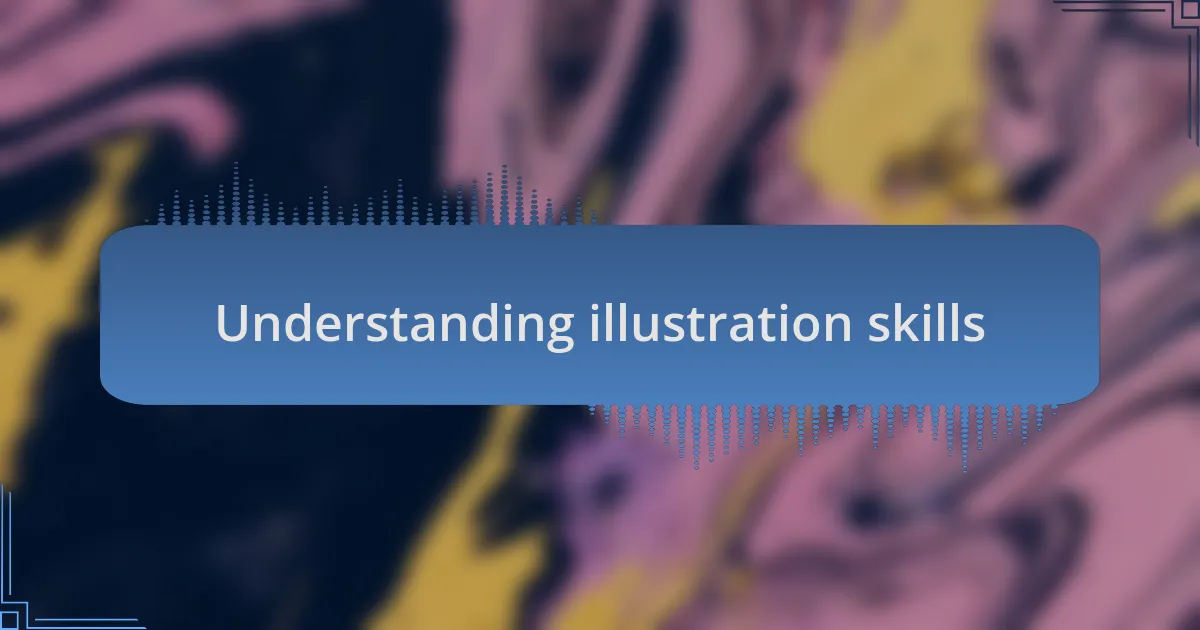
Understanding illustration skills
Illustration skills are the bridge between imagination and visual expression. I remember the first time I picked up a pencil, feeling a rush of excitement and anxiety. That initial sketch, though far from perfect, was a turning point for me. Have you ever felt that electric moment when your thoughts finally take shape on paper?
Understanding illustration skills involves grasping fundamental concepts like composition and color theory. I once struggled with color choices, often finding my work flat and uninviting. It wasn’t until I explored color palettes and experimented with different shades that my illustrations began to resonate emotionally with viewers. What colors evoke feelings in you?
There’s also a unique rhythm to illustrations that comes from practice and patience. I often revisit my earlier work and notice how much I’ve grown; every doodle was a stepping stone. Can you recall a moment when repetition led to a breakthrough in your creative journey? It’s in these small, iterative experiences that our skills truly flourish.
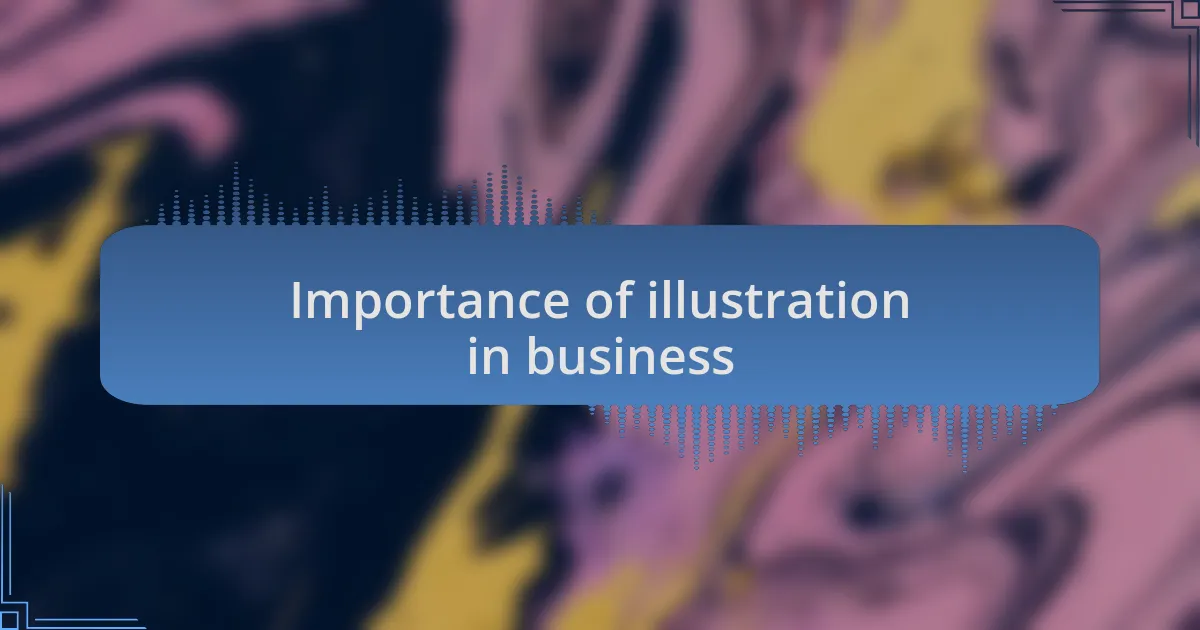
Importance of illustration in business
Illustration plays a pivotal role in business by enhancing communication and storytelling. I recall working on a marketing project where the right illustration transformed a complex concept into an easily digestible visual. Have you ever noticed how a simple image can convey a message that’s harder to express with words alone? It’s like having a universal language that connects with people on an emotional level.
Moreover, illustrations can significantly boost brand identity. When I began incorporating unique illustrations into my branding, I saw an increase in audience engagement, as clients resonated with the visuals and associated them more closely with my values. Isn’t it interesting how a well-crafted image can create a lasting impression and foster loyalty among customers?
Lastly, illustrations can drive creativity and innovation within a business. I’ve found that when I use illustrations in brainstorming sessions, ideas flow more freely. It invites collaboration as visuals spark discussions we might not have otherwise. Have you ever experienced a moment where an image led to a breakthrough idea? That’s the power of illustration in a business context; it’s a catalyst for creativity.
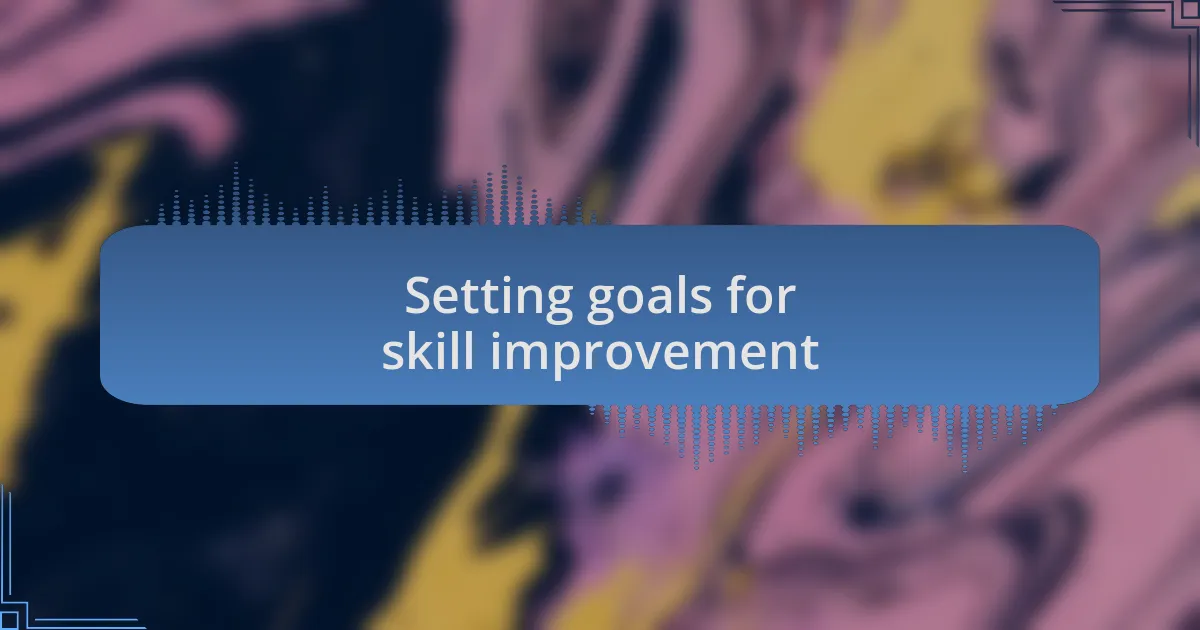
Setting goals for skill improvement
Setting goals for skill improvement is essential in any creative pursuit, including illustration. When I first started on this journey, I set specific, measurable goals that kept me motivated. For instance, I aimed to complete a certain number of drawings each week, tracking my progress in a sketchbook. Have you ever noticed how tangible a goal can feel when you see it on paper?
Breaking down my larger objective into smaller, achievable milestones also made a difference. Instead of telling myself I wanted to “get better at shading,” I focused on mastering a single technique each month. I still remember how excited I felt when I finally nailed that gradient effect! Celebrating these small wins along the way reminded me that every step, no matter how small, contributes to my overall growth.
Moreover, setting time-bound goals challenged me to stay consistent. I set aside dedicated hours each week to focus on illustrating, turning it into a non-negotiable part of my routine. Wouldn’t you agree that making time for practice is half the battle? This structure not only honed my skills but also transformed my approach to illustration, making it a fulfilling and integral part of my creative process.
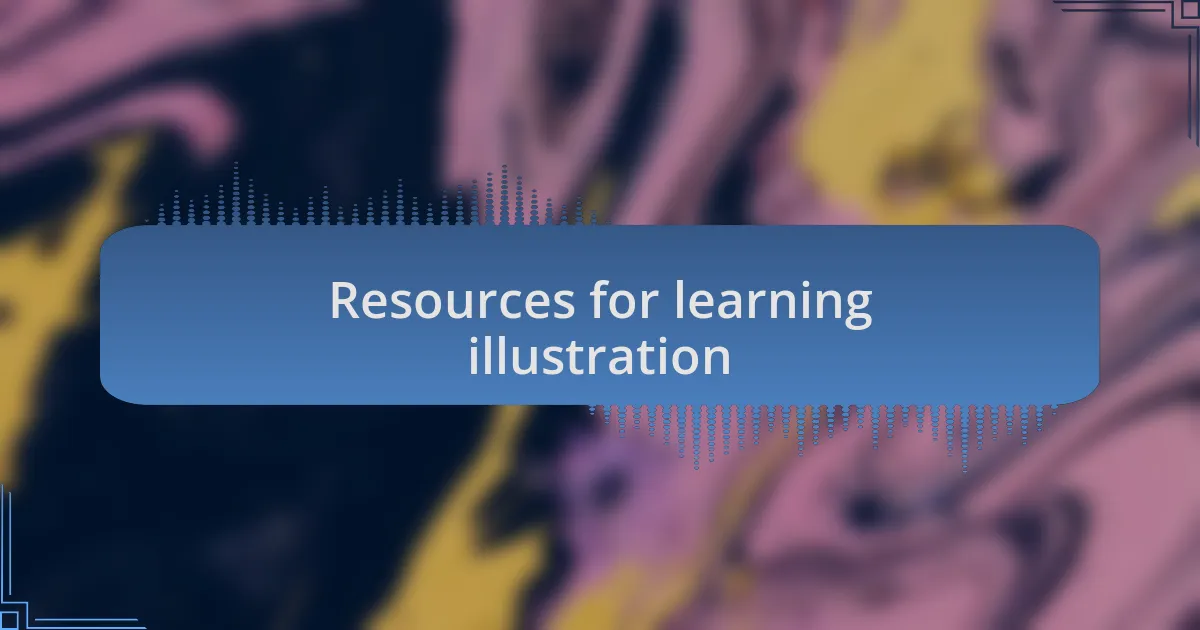
Resources for learning illustration
When it comes to resources for learning illustration, I found that online platforms like Skillshare and Udemy offer courses that cater to various skill levels. I remember diving into a beginner’s course on character design and was surprised at how much I learned just from watching the instructor break down complex concepts into manageable steps. Have you ever had that “aha!” moment when a tough idea suddenly clicked?
Books, too, played a crucial role in my growth. I invested in titles like “Drawing on the Right Side of the Brain” by Betty Edwards, which changed my perspective on how to approach illustration. The way she articulated the importance of seeing shapes rather than objects resonated with me deeply. Do you have a book that transformed your understanding of art?
Lastly, connecting with other illustrators through social media platforms like Instagram or communities like DeviantArt opened up a world of inspiration and feedback. I vividly recall sharing one of my early pieces for critique; the thoughtful comments pushed me to refine my work in ways I hadn’t considered. Isn’t it fantastic how collaboration can spark new ideas and fuel creativity?
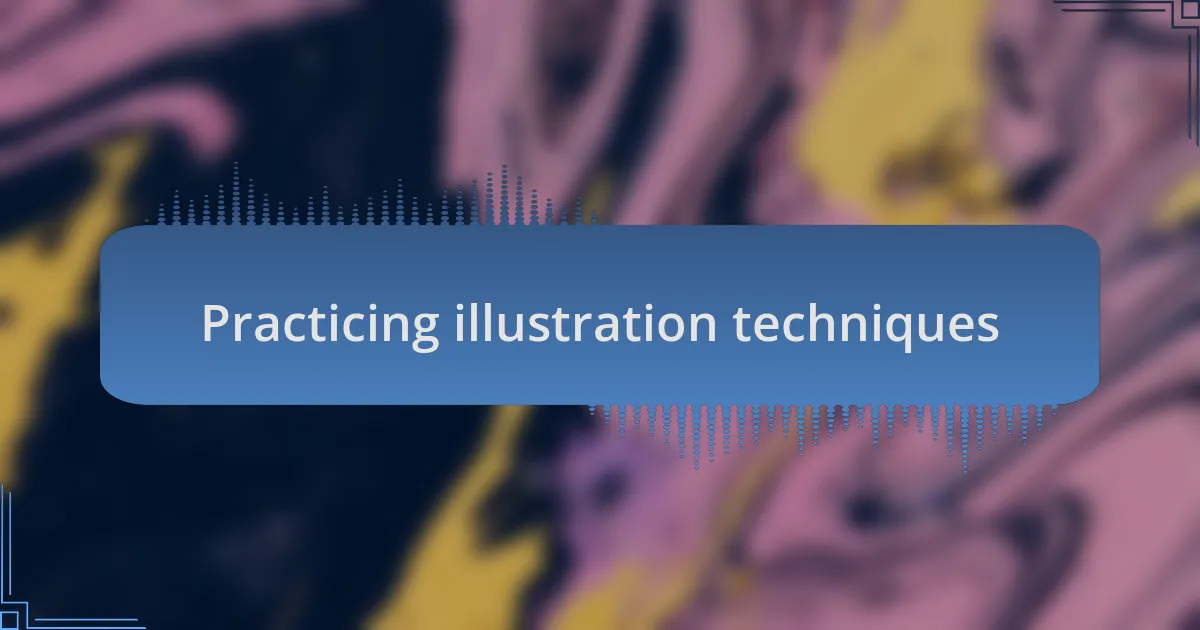
Practicing illustration techniques
Practicing different illustration techniques became a game-changer for me. I remember dedicating whole weekends to sketching, trying out everything from watercolor to digital painting. One day, I spent hours just experimenting with shading; the sense of satisfaction when I finally got it right was incredible. Have you ever lost track of time while immersed in a creative challenge?
Incorporating daily practice into my routine was another significant step. I started with quick exercises like gesture drawing or thumbnail sketches, which helped me loosen up my hand and think more fluidly. It was fascinating how a simple five-minute warm-up would transform my mindset and energy towards my longer projects. Do you find that short bursts of focused practice are more beneficial than long sessions?
Participating in online challenges, such as Inktober, propelled my progress even further. Each October, I embraced the daily prompts, pushing myself out of my comfort zone to try styles I’d never considered before. The thrill of sharing my work with a community cheering me on fostered a sort of camaraderie I truly appreciated. Have you ever felt that sense of community fuel your passion?
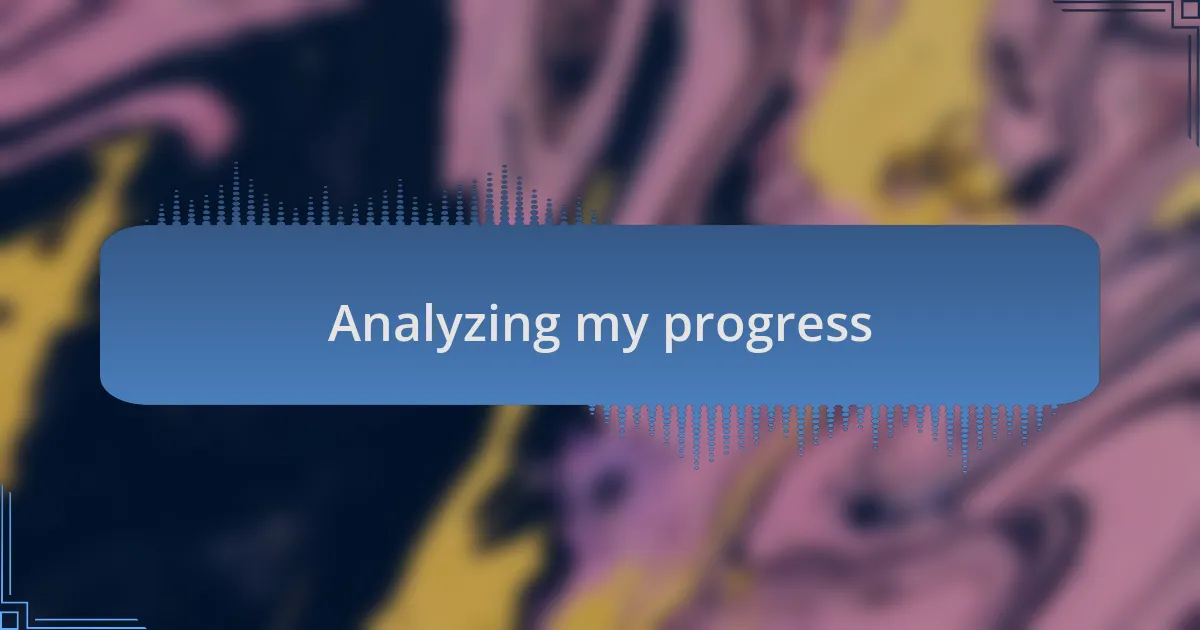
Analyzing my progress
When I took a moment to step back and analyze my progress, the growth I experienced was evident. I remember flipping through my old sketchbooks and cringing at my earlier attempts. Yet, looking closely, I could see the gradual evolution in my style. Isn’t it captivating to witness your journey unfold on the pages?
Reflecting on specific milestones helped me identify areas for improvement. I noticed that the illustrations I created after my in-depth studies were more detailed and expressive than those from before. In one instance, after analyzing a piece I thought was strong, I realized it lacked depth. This realization ignited a desire within me to dig deeper into techniques like contrast and composition. Have you ever found that a simple reflection can open up new avenues for creativity?
It was during these moments of reflection that I recognized the importance of feedback. Sharing my work with peers and receiving constructive criticism provided me with a fresh perspective on my skills. I distinctly recall a time when a fellow illustrator pointed out subtleties in my color choices that I had previously overlooked. Their insights not only encouraged me but also catalyzed a shift in how I approached my projects. How valuable do you find feedback in your creative journey?

Sharing my work and feedback
Sharing my work has always felt like stepping onto a stage. I vividly remember the first time I posted my art online; my hands trembled as I clicked ‘share.’ The rush of vulnerability was intense, yet the outpouring of feedback from my audience was overwhelming in the best way. Their comments not only validated my efforts but also shed light on aspects of my work that I hadn’t considered. Have you ever felt that exhilarating mix of fear and thrill when exposing your creativity to the world?
Receiving feedback can be a double-edged sword. There was a time when I shared a piece that I thought was my best work only to encounter mixed reviews. The criticism stung at first, especially because I had poured my heart into that illustration. However, as I embraced the insights offered, it became clear that confronting these critiques was an essential part of my growth. When has feedback shaped your perspective in unexpected ways?
I’ve also found that facilitating feedback sessions with fellow creatives has been immensely beneficial. In one memorable instance, we all laid our work out for discussion, and I was amazed by the collective perspective we built. Hearing different viewpoints brought clarity to my artistic blind spots, allowing me to refine my techniques and explore new ideas. Don’t you think collaboration enhances our creative journeys?